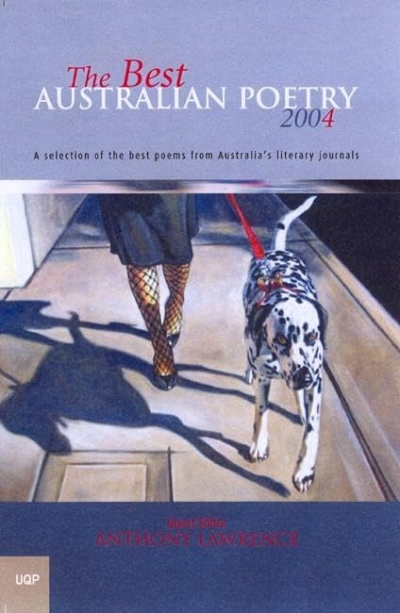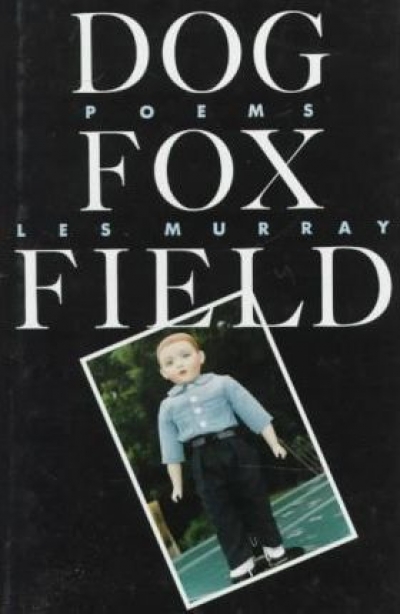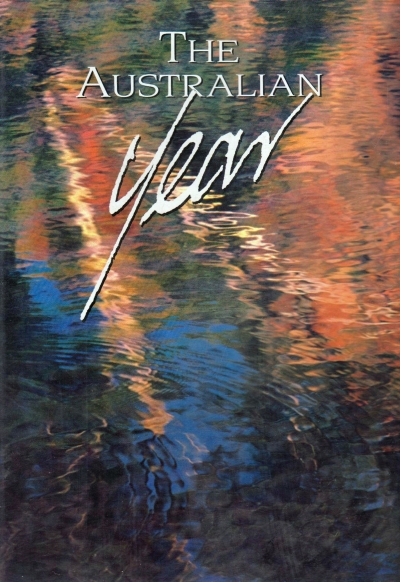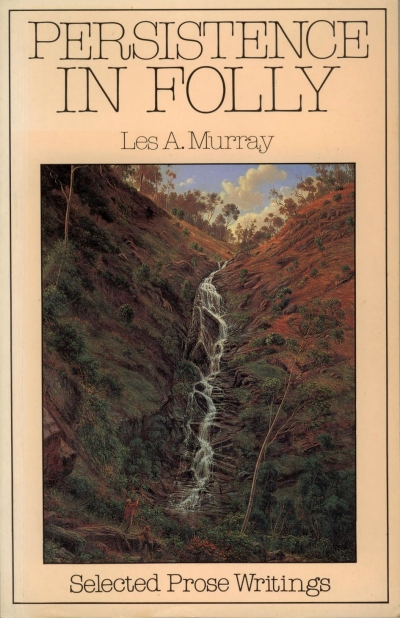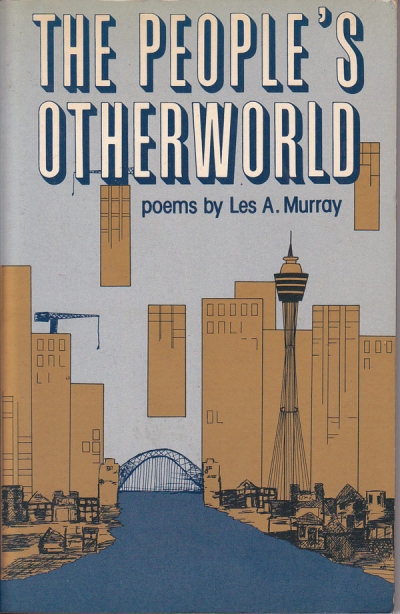Les Murray
The Best Australian Poetry 2004 edited by Anthony Lawrence & The Best Australian Poems 2004 edited by Les Murray
Publishers and the publics they serve seem enthralled by the idea of ‘the best’. The best of what is ultimately less important than the superlative itself, which implies a rigorous screening process to isolate the most worthy material. Never mind that magazine and book publishers have already put writing through a brutal screening process with acceptance rates from .01 to 1 per cent. For readers whose schedules or temperaments prohibit them from doing the work themselves, a collection of ‘The Best’ can be useful and appealing.
... (read more)The Owner of My Face by Rodney Hall & Collected Poems by Les Murray
W.H. Auden wrote, ‘Bless what there is for being’; and Beckett, of God: ‘The bastard, he doesn’t exist.’ Poetry swings between these poles, of celebration and deploration, lauds and plaints. At least, so it goes with poets who, otherwise disparate, have the trenchancy of Rodney Hall or Les Murray. Neither is a stranger to nuance, to evocation or implication, and any of these can be a tactical resource in mind or mouth for either of them; but the agenda is proclamation as often as not, and the sentiments are hued accordingly. At the end of most of their poems there is a pendant which says, in invisible writing, ‘dixit!’, and one usually sees why.
... (read more)Paul Kane reviews ‘The Poetry of Les Murray’ edited by Laurie Hergenhan and Bruce Clunies Ross, ‘Les Murray’ by Steven Matthews, and ‘Poems the Size of Photographs’ by Les Murray
You might expect a book of eighty-eight new poems by Les Murray to be sizeable (most of his recent single volumes run to about sixty poems each). But Poems the Size of Photographs is literally a small book, composed of short poems (‘though some are longer’, says the back cover) ...
... (read more)Despite the protestations of my close friends I choose to regard myself as a normal person. Only at certain times of the year do I realise how tenuous are my links with the mundane world.
One of these troublesome occasions is when I prepare my income tax form.
... (read more)Dog Fox Field by Les Murray & Blocks and Tackles by Les Murray
The reasons for rhyme, and the rhyme of his reasons, can be found in the prose work in the pieces ‘Poems and Poesies’ and ‘Poemes and the Mystery of the Embodiment’, the general underpinnings of which are outlined in ‘Embodiment and Incarnation’. He argues that art is a product of a trinity: the forebrain (the seat of waking reason), the limbic reptilian brain (the dream) and the body (the dance of ecstasy). God can reach us through all three, and poetry is a uniquely placed art which exploits all of these areas. Any deep integration of the three is a poem. Hence a theology (Christianity), an ideology (Marxism), or a breath-taking design (Porsche cars) can be a poem. Using the analogy from phoneme, Murray calls this large unit a ‘poeme’. ‘Poem’ he reserves for its traditional meaning, arguing that a poem is the most perfect and integrated art-form there is.
... (read more)The New Oxford Book of Australian Verse edited by Les A. Murray
This book can read at times as though it were Les Murray’s revenge on Australian poetry. Of course, no anthology will please all of the people all of the time, but this one does not so much seem to represent any consistent view of what significant poems have been written in this country as Murray’s own projections about the kinds of poetry which ought to have been written here. The New Oxford Book of Australian Verse is quirky and opinionated, very ambitious in the ground it wants to cover, and yet ultimately hamstrung in its assemblage. It amounts to a quixotic attempt to see Australian poetry as a massively unified body of work, and Murray has played fast and loose with the material that was before him in order to reveal this unity.
... (read more)The Australian Year: The chronicle of our seasons and celebrations by Les A. Murray
The Australian Year looks like the dreaded coffee table book, yet another gloss on the national ‘identity’, backed by Esso, and fit for export only. Certainly, the cover picture of parroty water gives that impression, as do many familiar ones inside, though the main photographer, Peter Solness, does turn in some good homely details as well. Generally, the photographs stand like an avenue of plane trees, their density and hues changing with the seasons of Les Murray’s fully ripened, free-ranging text – which meets the high expectations we might be forgiven for holding when a major Australian poet, a well-versed country boy and populist by persuasion, an erudite and vernacular singer of the old and new, writes a book on a phenomenon as democratically inclusive and resonant as the seasons.
... (read more)Les Murray describes his poetry as ‘a celebration of life; a contemplation of life in ways that interest and delight people and make them reflective’. Poetry, he says, is ‘primarily not to be studied, it is to be read’.
... (read more)The heat of recent controversy in Australia about the meaning and value of multiculturalism in education, in history and in society at large is an indication of the tenacity with which a dominant culture, in this case that of British Australia, clings to its privileges.
... (read more)What is more common than the indicative mood, and what is more uncommon than the way Les Murray uses it? His Christian finger ‘scratches the other cheek’ (‘The Quality of Sprawl’) but more often points out tracks seen from the air, but invisible on the ground: a hibiscus becomes ‘the kleenex flower’ (‘A Retrospect of Humidity’); the shower an ‘inverse bidet,/ sleek vertical coruscating ghost of your inner river’ (‘Shower’); a north-coast punt ‘just a length of country road / afloat between two shores’ (‘Machine Portraits with Pendant Spaceman’). You see it in his use of the demonstrative pronoun – ‘this blast of trance’ (‘Shower’); the definite article – The man imposing spring here swats with his branch controlling it’(‘The Grassfire Stanzas’)’; the deictic use of ‘I’ and ‘we’ to get his readers looking in the same direction as he points out where we are and where we’ve come from – ‘So we’re sitting over our sick beloved engine / atop a great building of the double century / on the summit that exhilarates cars, the concrete vault on its thousands / of tonnes of height, far above the tidal turnaround’ (‘Fuel Stoppage on Gladesville Road Bridge in the Year 1980’).
... (read more)

